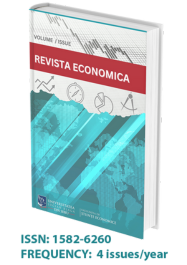
IS THERE AN OPTIMAL VALUE ADDED TAX RATE?
SMEDOIU-POPOVICIU Alexandra, Bucharest University of Economic Studies
HOROBET Alexandra-Lavinia, Bucharest University of Economic Studies
BELASCU Lucian, Lucian Blaga University of Sibiu
Abstract:
With VAT being one of (if not the) largest contributors to country budgets, many Governments are preoccupied with maximising VAT collections. However, a simplistic view of increasing the VAT rate is not appropriate, as research shows there is inverse relationship between marginal collections and marginal VAT rates. Instead, as results in this Generalized Method of Moments estimation proposed by this paper shows, Governments should look at effective rates of taxation based on the composition of their economy. Also, providing generalized or large-scale reductions or exemptions depresses the effective rate of taxation and reduces the VAT productivity index, although we see them as very popular in European Union countries. A connected but important area is the level of collection, which is influenced by a cumulus of factors, starting with the tax rate (negative correlation), to digitalisation of the administration (positive correlation) and economic culture of a country (positive correlation). In any case, consumption taxes such as VAT seem to be less distortionary to economic activity and investment than direct taxes, so more attention is required to setting an optimal VAT rate that generates maximum marginal collection.
Keywords: Taxation, Indirect Taxes, Fiscal Revenues, Romania, European Union
JEL Classification: E62, H21, H30
Volume: 75, Issue: 1
Pages: 80 - 90
Publication date: April, 2023
DOI: 10.56043/reveco-2023-0007
Download the article: http://economice.ulbsibiu.ro/revista.economica/archive/75107smedoiu-popoviciu&horobet&belascu.pdf
SMEDOIU-POPOVICIU Alexandra, HOROBET Alexandra-Lavinia, BELASCU Lucian, 2023, IS THERE AN OPTIMAL VALUE ADDED TAX RATE? , Revista Economică, Lucian Blaga University of Sibiu, Faculty of Economic Sciences, vol.75(1), pages 80-90, April. DOI: https://doi.org/10.56043/reveco-2023-0007

All content is licensed under the
Creative Commons Attribution 4.0 International License (CC BY 4.0)
.








